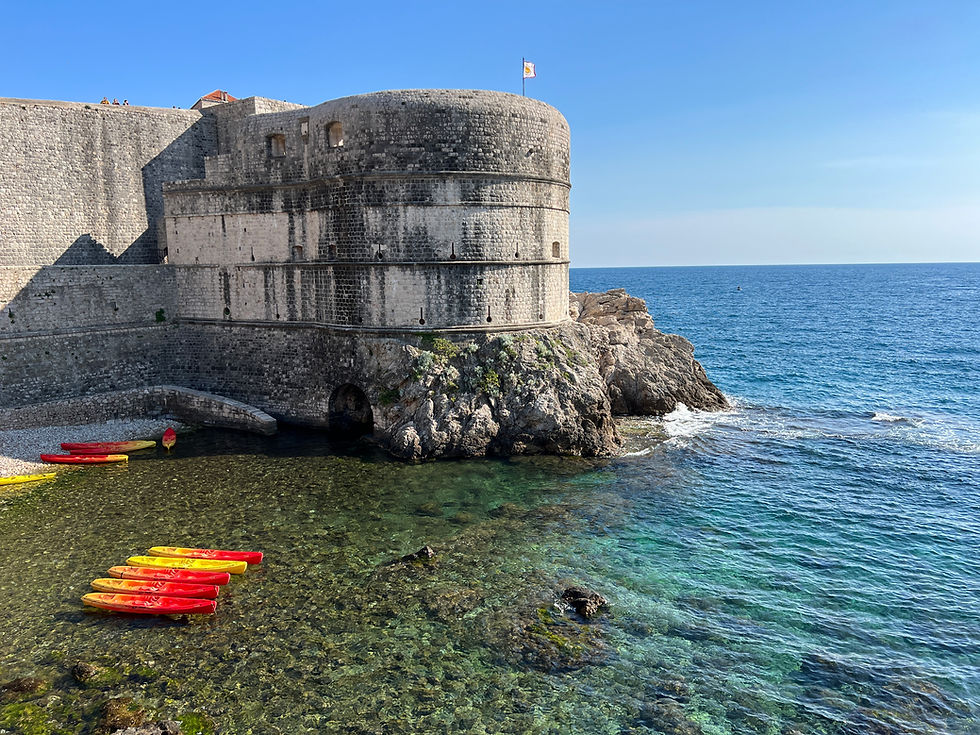Dubrovnik, Croatia Travel Guide: Old Town, City Walls & Historic Sites
- Will Gerson
- 18 hours ago
- 3 min read
Located along Croatia’s scenic Dalmatian coast, Dubrovnik’s beautiful old city is one of the gems of the Adriatic.

With a history spanning millennia, the city has seen many rulers as well as its fair share of destruction over the centuries, sustaining significant damage from an earthquake in 1667 as well as the bloody breakup of Yugoslavia in the 1990s. But the city’s great beauty endures, thanks to the spirit of its people and the preservation efforts of local and national governments. Read on for a guide to exploring the ‘Pearl of the Adriatic.’

Stradun
This is the old city’s main street, running from the Pile Gate at the western edge of the city walls to the harbor in the east. Developed on reclaimed marshland during the rule of the Venetian Republic, the buildings that line it today date to the 17th century, when the majority of the city center was rebuilt after the devastating earthquake.

These buildings survived further destruction from shelling during the seven-month-long siege of Dubrovnik, when the Croats successfully fought for their independence against Yugoslavia. Although this large-scale violence was just a couple of decades ago, it feels hard to imagine as you stroll the beautiful limestone street today, buzzing with tourist activity but with an acute feeling of serenity as well.

Walls of Dubrovnik
The entire pedestrian old city is enclosed by an impressive system of defensive walls that run for an uninterrupted length of 6,360 feet (1,940 m). Dubrovnik’s origins are as a place of refuge for Greek colonists fleeing Slavic invasions in the 7th century, so its defense has been an important part of the city’s structural and cultural identity since its foundation.

The walls have stood strong against invaders, earthquakes, and even modern artillery, keeping its residents safe within. Take a walk along the walls for unparalleled views of the old city as well as the blue waters of the Adriatic below.
Collegium Ragusinum
This former Jesuit college, rebuilt after the earthquake, is an exquisite example of 17th-century Baroque architecture. The complex is famous for its Church of Saint Ignatius as well as the monumental steps that lead up to it from the Stradun—the steps will surely be familiar to Game of Thrones fans, as will various other sites around the city.

Rector’s Palace
This palace served as the seat of the rector—the leader of the Republic of Ragusa, an independent city-state centered around Dubrovnik (then known as Ragusa) from the mid-14th to the early 19th century.

Ragusa was a maritime republic comprising a thin stretch of mainland and numerous islands around its capital city, with a strong merchant economy that accrued considerable wealth until it was conquered by Napoleon, bringing an end to its sovereignty. The ornate buildings of the old city today are a testament to the wealth and power of Ragusa.
Franciscan Friary
Located at the western end of the Stradun, just inside the Pile Gate, this friary’s bell tower is one of the city’s most visible landmarks.

In addition to its church and its extensive library, the friary is also home to one of the world’s oldest pharmacies, where the friars have been concocting natural cures and herbal medicines with plants grown in their gardens since the early 14th century.
Food and Drink
Dubrovnik’s cuisine is an interesting mix of influences from its Italian and Balkan neighbors. For pizza and pasta, I recommend Pizzeria Oliva. For all manner of seafood straight from the Adriatic, visit Barba. And for a charming wine bar with delicious meat and cheese plates, D’Vino will be your spot for Croatian and international wines.




